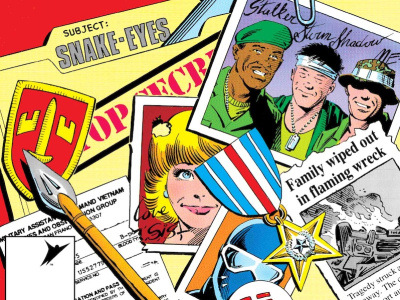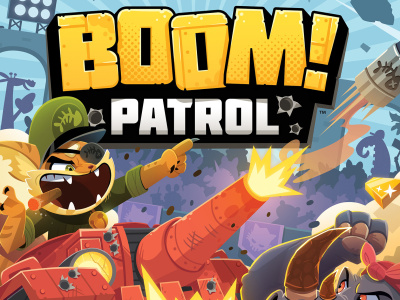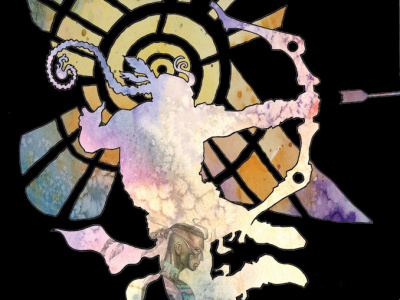 We recently had an opportunity to interview Marvel Senior Vice President-Sales David Gabriel about Marvel’s 2011 sales and what to look for in 2012. In Part 1, we talk about Marvel’s sales in 2011 and the company’s pricing strategy and its impact (or lack there-of) on sales. In Part 2, we talked about Marvel’s 2012 plans, and about Marvel’s strategies for gaining new readers. And in Part 3, we talked about event fatigue, Marvel’s graphic novel strategy, and digital.
We recently had an opportunity to interview Marvel Senior Vice President-Sales David Gabriel about Marvel’s 2011 sales and what to look for in 2012. In Part 1, we talk about Marvel’s sales in 2011 and the company’s pricing strategy and its impact (or lack there-of) on sales. In Part 2, we talked about Marvel’s 2012 plans, and about Marvel’s strategies for gaining new readers. And in Part 3, we talked about event fatigue, Marvel’s graphic novel strategy, and digital.What do you see as Marvel's major successes in 2011, and what were the areas where things didn't go as well as you expected?
From our point of view, this was a year of tremendous successes from the beginning of the year with the Death of Johnny Storm to the end of the year with strong launches in Defenders and Avengers: X-Sanction. Fear Itself surpassed our expectations, as the industry responded with strong orders that made it the top selling story-driven event of the year. Then we had two great summer blockbusters in Spider-Island and X-Men: Schism, both of which resulted in higher sales for our Spidey and X-books. The introduction of Miles Morales to the Ultimate universe as the new Spider-Man was not only an important moment in pop culture history, it’s been an incredibly strong seller for us as well.
I’d be remiss in not mentioning the amount of acclaimed and high selling new launches this year—FF, Ultimate Comics Reborn, Daredevil, Mighty Thor, Captain America, Wolverine & The X-Men, Uncanny X-Men and more. Add in the many awards Marvel earned this year, such as the Eisners for Marvelous Land of Oz, and it’s hard for us to define this year as anything but a success.
On the other hand, many of our b-string or second tier catalog of characters had a terrible time in this market and it’s taken us a while to get adjusted to that. Going into 2012 we’re adopting new strategies to combat the perspective that the second tier titles “don’t matter” and we’re hoping the market reacts favorably.
But I look at the January numbers and Marvel has 52 of the top 100 comics--we’re seeing a lot of success with our big books and retailers are making a lot of money from them.
In some ways, 2011 was almost two different years in comic stores, with the first seven months of the year a very challenging period for sales, and the fall and winter month showing a pick-up, driven by the media and fan attention to DC's re-launch. Did Marvel see an effect on its sales from the increase in store traffic in the latter part of the year?
It was definitely an interesting year both at the beginning and at the end. The year began with retailers seeing a huge drain on their bottom line when prices from other publishers dropped overnight without any story to increase sales of these price reduced titles. That was tough on a lot of stores and we all saw those dollars disappear from the industry.
There’s a perception that as the year ended DC rode in our their white horse to save everything, but that’s just incorrect—throughout the year Marvel was driving strong business with Fantastic Four, FF, Amazing Spider-Man, Ultimate Comics Spider-Man and X-Men: Schism. We ended the year with huge launches like Incredible Hulk, Uncanny X-Men, Wolverine & The X-Men, Defenders and more that not only diversified our offerings, but paired our biggest creators with our biggest characters, all without tearing up the work that’s come in years past. Not only did we launch great new books, we delivered unparalleled value in books like Point One and Fantastic Four #600, which featured an amazing amount of new content for a great price.
Looking at the sales this year, we saw increases in sales with each big story and constant sell outs of new printings for these books, so there was definitely a strong interest in our core books from consumers month after month, regardless of moves from our competition. Certainly DC achieved some success with their New 52 and we’re happy to see them prosper, but we’re proud to say we had very strong sales throughout the year to keep retailers and customers excited.
The fall of 2011 was the longest run with Marvel at #2 in comic store market share in many years. Any comment?
Competition is good for the industry and we’re all better off when every company puts out their best product. We’re not going to go out each month and trumpet a victory in those numbers--the real victory is bringing new readers to comics, exciting fans and keeping retailers happy with quality, top selling books. But if those numbers help motivate people to bring their A game, that’s great.
On a book like Point One #1, is any of the overship included in the sales index Diamond reports? And if not, do sales from the overship ever turn up in their sales charts?
Diamond does not calculate in any dollar amount for free overships.
Since the recession started, Marvel sales have been weaker, at least in the piece sales on your bestsellers. That's different than what we've seen in past recessions, when comic sales have been unaffected or have even gone up. Some think that difference is due to the relative price of comics (particularly $3.99 32-page comics), others think it's a content issue. What are your thoughts?
There a lot of factors, but the $3.99 price point was not an issue in 2011--looking at the top selling comics for the year the majority seem to be at that price point. We--in addition to other companies--have used this price point for years and seen strong sales. The bigger problem is the economy and resultant unemployment combined with too many titles from all publishers (and no, I’m not ignoring our responsibility here--a look at the latest Marvel Previews catalogue will show you we’ve made changes) lead to fewer customers in the stores. Without a viable newsstand we’ve lost a major distribution channel to the masses.
That’s a big part of the push for digital comics--this is a way to get new customers sampling comics and then going to comic stores for that unique experience you can’t get anywhere else. And including codes for a free digital copy of the comic you purchase without any price increase--something we’ve successfully done on a number of titles--really adds value to the print copy. That added value will drive more customers into comic stores.
Marvel pursued a substantially different pricing strategy for its periodical products in 2011 than DC did. Can you describe the rationale for pricing your books the way you do?
Our pricing strategy has been consistent for about three years now. We have certain books that are $3.99 and certain books that are $2.99. There's a vast multitude of reasons for how books get priced... those range from page count, to creators, to ratings, and probably a host of other things that I am not thinking of.
How many story pages should people expect to find in a 32-page comic in 2012, and how is that changing, if at all?
First, that’s like asking how many minutes does an audience expect a movie to be, or a concert, or a Broadway show… those forms of entertainment are not pro-rated by the minute and comic books have never been prorated by the page count (which has fluctuated for all publishers for 75 years!). But because it does get asked... in a standard comic they should expect to find around 20 pages of content. Some may have more, some may have less. The important thing is to deliver a compelling comic book month in and month out--as long as we’re doing that, everyone’s getting their money’s worth.
Click here for Part 2.







